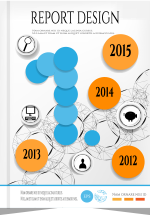Smart thermostats promise higher energy efficiency, precise control and personalized comfort. If sales numbers are any indication, contractors and homeowners are believers. Of the 40 million thermostats sold in 2015, 40 percent were “smart,” offering features like internet connectivity, occupancy sensing and learning capabilities.
With public interest and acceptance rising, it’s time to ask if these devices are changing consumer behavior, leading to greater efficiency and engagement with energy management. To shed some light on these questions, let’s examine four ways smart thermostats have already made an impact:
1. Smartphones Improve Customer Experience
Remote control of household temperature with a smartphone is one of the most highlighted features smart thermostats offer. Providing a convenient way to control energy use and still maintain comfort is a huge plus for promoting engagement. Furthermore, mobile apps allow adjustments to be on the fly rather than only relying on smart thermostat sensors or schedules. It’s no surprise then that a recent consumer survey found that 44 percent of smart thermostats buyers rank remote control as the most appealing aspect of smart thermostats.
2. Voice Assistants Create More Convenience
Owners of voice assistants, like Alexa or Google Assistant, are two times more likely to own a smart thermostat. As the evolution of the smart home continues to move forward, consumers now have even more ways to control energy use. In fact, around 19 percent of owners use their voice assistants to adjust the temperature in their homes. The list of smart thermostats compatible with the most popular voice assistants also continues to grow, with some newer models including integrated voice assistants, to further cement thermostats as an integral part of the smart home.
3. Engagement with Utility Becoming More Likely
Technology adoption is presenting an opportunity for utilities to improve customer experience and increase interaction, which is particularly valuable for expanding demand response programs. These programs aim to adjust power consumption based on existing supply conditions, and the more convenient this is to do, the more likely consumers will participate.
According to the Smart Energy Consumer Collaborative’s study, The Empowered Consumer, 68 percent of consumers who participated in the survey are interested in smart thermostat programs, and incentives as low as $50 do not reduce interest. As consumer participation in demand response increases, it can establish yet another channel for consumers to learn and benefit from energy use information, making them more likely to stay engaged.
4. Energy Savings Awareness Increases
Are consumers truly aware of how much a smart thermostat can save on their utility bill? Research by Deloitte in 2016 shows that although most consumers understand that smart thermostats lower their energy bills, few understand by how much. Smart thermostat manufactures clearly understand this challenge and continue to tweak and improve how energy information is displayed for customers. In 2017 Xcel Energy Colorado conducted a smart thermostat pilot and found that 30 percent of respondents monitored their home energy use several times a month, with 13 percent of these monitoring several times a week. While these numbers are promising, it’s clear that smart thermostat manufactures must continue to provide incentives for consumers to keep track of their energy usage. One possible solution lies with gamification, and some smart thermostat manufacturers, such as Nest, have done just that, awarding virtual rewards for energy efficiency habits to keep their users engaged.
Smart thermostats continue to have great potential for both consumers and utilities. As these devices find their way into more homes and become more accessible, it’s clear they are influencing how people perceive energy management, starting with their most energy-intensive appliances.
To learn more about how smart thermostats fit as a component in utility advanced load management programs, check out this white paper.








Leave a comment